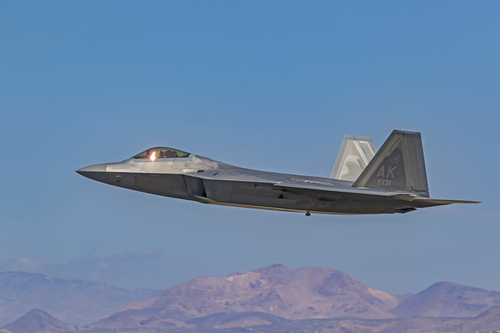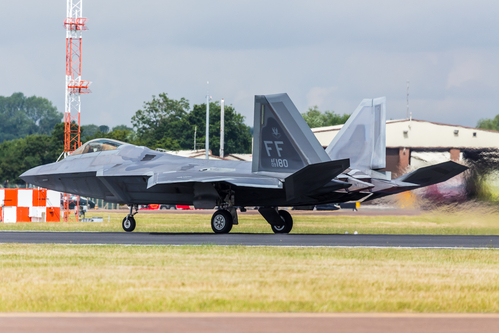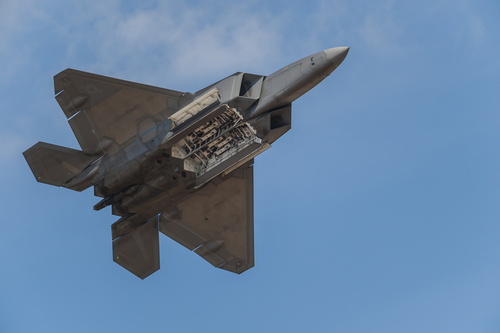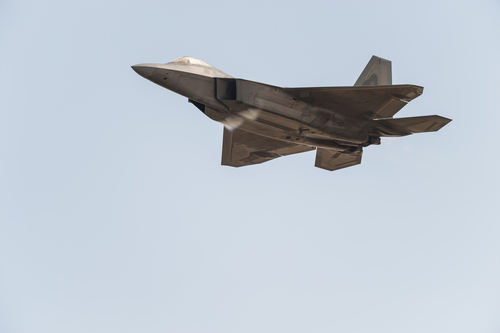
The F-22 Raptor, America’s unparalleled 5th-generation stealth air superiority fighter, has grappled with a paradoxical destiny: its exceptional combat capabilities have been curtailed by strategic and budgetary decisions rather than technological limitations. Despite being a symbol of U.S. air power, the F-22 program was concluded prematurely, producing only 186 Raptors out of a planned 750.

The state-of-the-art fighter remains a fearsome combatant, yet its production halt in 2011, combined with legislative restrictions on foreign sales, has put its future into question.

Introduced in 2005 to succeed the F-15 Eagle, the F-22 brought groundbreaking technology to the skies. It was the first stealth fighter jet with the ability to supercruise and featured advanced sensor fusion for enhanced situational awareness.

With thrust vectoring capabilities, the F-22 excelled in dogfights, boasting a high angle of attack and formidable armament that could all be housed internally to preserve its stealth profile.

The story of the Raptor is, however, not solely one of technological triumphs. It entered service during the U.S. military’s focus on asymmetric warfare in the Middle East, where its advanced air-to-air capabilities were less in demand.

Its unmatched attributes seemed unnecessary against adversaries without advanced air forces or sophisticated radar systems. “As the Pentagon was pouring trillions into the Global War on Terror, the F-22’s air superiority and stealth attributes went wasted,” as one report highlights the unfortunate timing of the F-22’s advent.

The decision to cease production was not only influenced by strategic shifts but also by economic considerations. The U.S. Air Force saw the program as too costly to maintain, deeming funds better spent on systems like the Next-Generation Air Dominance (NGAD) fighter.

As Lieutenant General Richard Moore noted in 2023, maintaining and upgrading the F-22 fleet, especially the older models with Block 20 software, could cost up to $7 billion by the end of the decade.

Despite its strengths, the Raptor’s weaknesses lie in its maintenance costs and outdated technologies. The aircraft’s avionics, though regularly updated, lack the interoperability of newer systems, such as the F-35 Lightning II. Furthermore, the Raptor’s design did not anticipate the vast operational ranges required for potential future conflicts.

Yet, its strategic value remains undeniable. “In every wargame scenario that has been run over the last few years, whenever even a pair of F-22 Raptors are introduced into the hypothetical combat situation, the advantages immediately shift over to the US side.”

The Raptor’s contribution to air dominance was exemplified in 2013 when an F-22 pilot, callsign “Showtime,” deterred Iranian fighters threatening a U.S. drone with just a radio warning.

His presence alone was enough to turn the tide without firing a shot, showcasing the Raptor’s psychological impact on adversaries aware of its prowess.

Some experts argue for reviving the F-22’s production line and expanding its availability to allies, especially given escalating global tensions.

Restarting production and lifting export restrictions could potentially reduce costs through foreign investment, as seen with the F-35 program. However, Congress has yet to authorize funding for an export variant, keeping the Raptor exclusive to the U.S. military.

As it stands, the F-22 Raptor is both a marvel of military aviation and a victim of changing times and fiscal prudence. While its future may be uncertain, its legacy as a dominant force in the air remains unchallenged, and its potential contributions in future conflicts cannot be easily dismissed.
